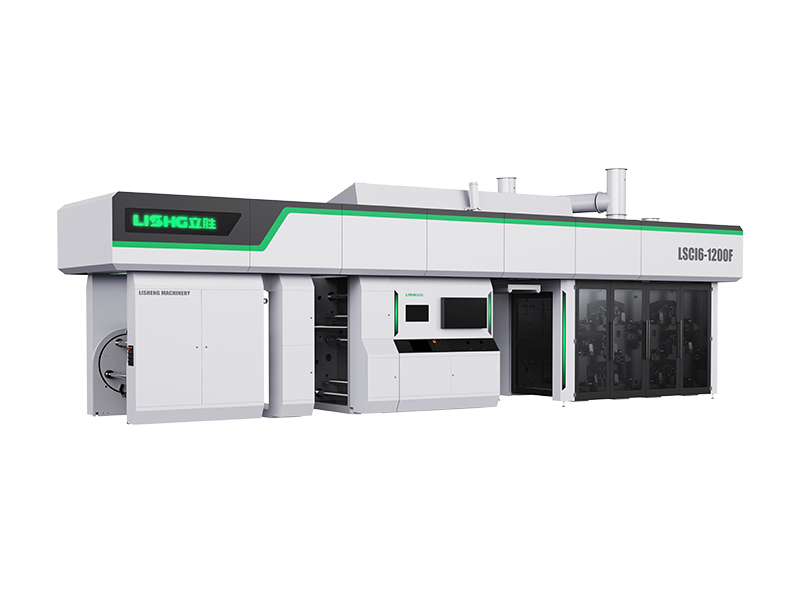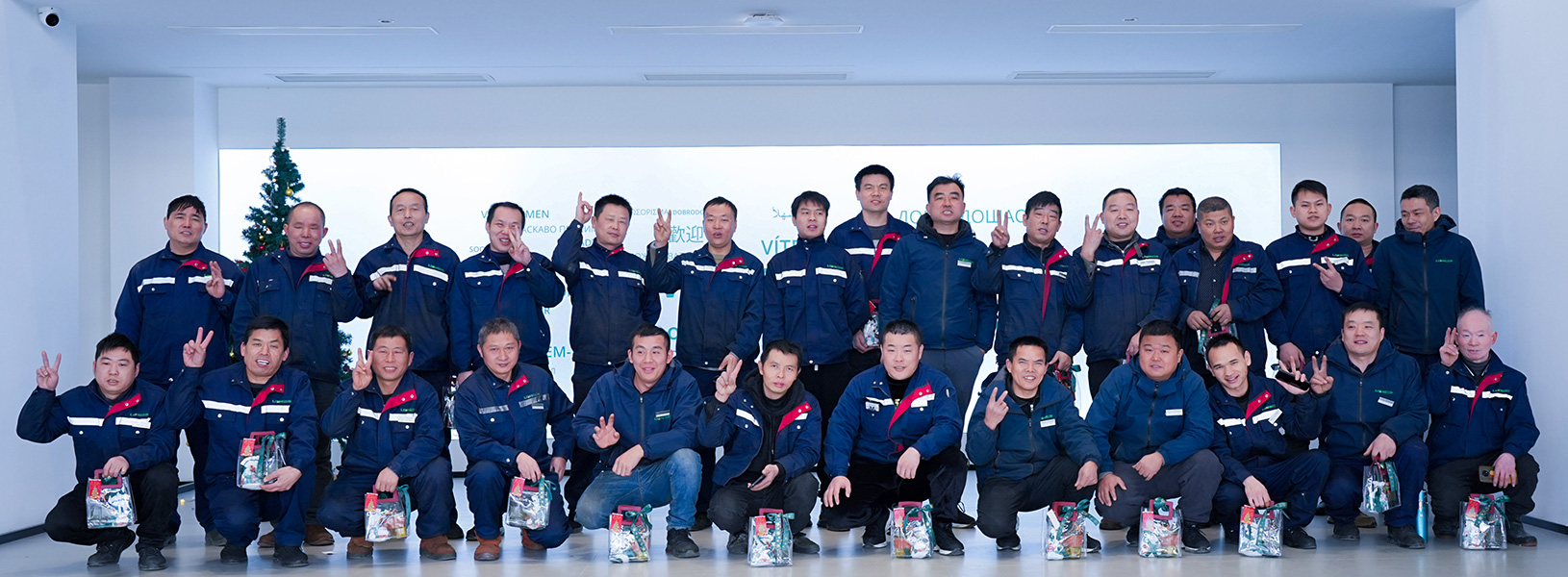
Gearless or Geared Servo: Which Flexo Press Fits You?
Flexographic printing is a versatile and widely used method for producing a variety of products, from labels to flexible packaging. If you’re in the market for a new flexo press, you’ve likely encountered two main types: gearless servo and geared servo presses. Choosing the right one is a critical business decision that can impact your print quality, efficiency, and long-term costs.This comprehensive guide will help you understand the core differences between these two technologies, so you can make an informed choice that aligns with your business goals.
What is Flexographic Printing?
At its core, flexo printing uses flexible relief plates to transfer ink onto a substrate. A flexo press consists of several key components that work together to achieve this:
- Unwind & Rewind Stations: These handle the continuous roll of material (the substrate).
- Printing Units: Each unit applies a single color. A press may have multiple units for multi-color jobs.
- Anilox Roller: This ceramic or steel roller has tiny engraved cells that pick up ink and transfer a precise amount to the printing plate.
- Plate Cylinder: The flexible printing plate is mounted here.
- Impression Cylinder: This cylinder applies pressure to the substrate, ensuring good contact with the printing plate for a clear image.
- Drying System: This system cures the ink before the next color is applied.
What is a Geared Servo Flexo Press?
A geared servo flexo press uses a central or common shaft with gears to drive the print cylinders. Each printing unit is connected to this main drive system through a series of gears. An individual servo motor, often located in the main press drive, controls the overall speed and motion.
While the servo motor provides precision control over the entire system, the gears are responsible for the rotational movement of the print and anilox cylinders. This design has been a standard in the industry for years and is a reliable technology.
What is a Gearless Servo Flexo Press?
A gearless servo flexo press, also known as a direct-drive press, is a more modern design. In this configuration, each key roller—the anilox roller, plate cylinder, and impression cylinder—has its own independent servo motor. There are no gears or a central drive shaft connecting the printing units.
Each servo motor is controlled by the press’s central control system, allowing for precise, individual adjustments to the rotation of each cylinder. This direct-drive system is what gives the gearless press its distinct advantages.
Comparative Analysis: Gearless vs. Geared Servo
Let’s break down the key differences to help you see which technology is the better fit for your operation.
I apologize for the oversight. I see the mistake now. I created a new table that reflects all five of the points you listed in your text.
| Feature | Geared Servo Flexo Press | Gearless Servo Flexo Press |
| Print Quality | Good; can have slight registration issues due to gear backlash and wear. | Superior; no gear backlash, leading to precise registration, sharper images, and smoother gradients. |
| Speed & Efficiency | Slower setup and changeover times. | Faster setup and changeover times, making it highly efficient for short runs. |
| Maintenance & Durability | Requires regular maintenance of gears and lubrication systems. Higher risk of mechanical failure and downtime. | Lower maintenance requirements. Fewer mechanical parts, leading to less downtime and greater durability. |
| Initial & Operating Costs | Lower initial cost. Higher operating costs due to more material waste, energy consumption, and maintenance. | Higher initial investment. Lower operating costs due to less waste, higher energy efficiency, and minimal maintenance. |
| Substrate Compatibility | Good for standard materials like paper and board. May struggle with very thin or delicate films. | Excellent for a wide range of substrates, including thin films and flexible materials, with consistent tension and registration. |
Print Quality
- Gearless Servo: The independent servo motors eliminate the mechanical play, or “backlash,” that can occur in gear-driven systems. This results in superior print registration accuracy, which is crucial for multi-color jobs and fine details. Without the chatter and vibration caused by gears, gearless presses produce sharper images, smoother gradients, and higher-quality prints. They are the ideal choice for demanding applications like high-end flexible packaging.
- Geared Servo: While modern geared presses are highly accurate, they are still susceptible to slight registration issues due to gear backlash and wear over time. This can be more noticeable in high-speed or long-run jobs. While they can produce excellent quality, they may not match the pristine registration of a gearless system, making them more suitable for less complex, more forgiving print jobs.
Speed & Efficiency
- Gearless Servo: The direct-drive system allows for faster and more precise setup. Individual servo motors can be adjusted automatically, significantly reducing job changeover and setup times. This makes gearless presses exceptionally efficient for short-run jobs and operations that require frequent changeovers. They can also achieve higher operating speeds without compromising print quality.
- Geared Servo: Setup and changeovers on a geared press are generally more time-consuming. Manual adjustments and the nature of the mechanical drive system mean that getting perfect registration can take longer. While they can operate at high speeds, they may require more fine-tuning to maintain quality, which can eat into production time.
Maintenance & Durability
- Gearless Servo: With fewer mechanical components, gearless presses require less maintenance. There are no gears to lubricate, clean, or replace, which reduces the risk of mechanical failure and downtime. The absence of a centralized gearbox also means fewer parts that can wear out.
- Geared Servo: Geared presses require regular maintenance for their gear trains and lubrication systems. The gears are subject to wear and tear, and if not properly maintained, they can lead to poor print quality or even machine failure. This translates to higher long-term maintenance costs and potential for more frequent downtime.
Initial & Operating Costs
- Gearless Servo: The advanced technology and multiple servo motors mean that gearless presses have a higher initial investment cost. However, these presses can offer a strong return on investment (ROI) through lower operating costs due to reduced energy consumption, less material waste during setup, and minimal maintenance.
- Geared Servo: Geared presses are more affordable upfront, making them an attractive option for businesses with a limited budget. However, their operating costs can be higher over time due to more material waste during setup, higher energy consumption, and greater maintenance needs.
Substrate Compatibility
- Gearless Servo: The high-precision control of a gearless press makes it highly compatible with a wide range of substrates, including thin films, delicate foils, and stretchable materials used in flexible packaging. The individual control of each motor helps maintain perfect tension and registration even on challenging materials.
- Geared Servo: While geared presses can handle various substrates, they may struggle to maintain consistent tension and registration on very thin or flexible materials, which can lead to waste. They are generally better suited for standard materials like paper and board used in label printing.
Making the Right Choice for Your Business
Choosing between a gearless and a geared servo press depends on your specific business needs and applications.
- Choose a Geared Servo Press if:
- You are primarily focused on long-run jobs where changeover time is not a major concern.
- Your products are mainly labels or standard packaging that do not require ultra-fine print registration.
- You are working with a tighter budget and are willing to accept higher long-term maintenance and operating costs.
- Choose a Gearless Servo Press if:
- Your business handles a high volume of short-run jobs and frequent changeovers.
- You need to produce high-quality, complex prints with perfect registration, such as high-end flexible packaging.
- You want to minimize downtime and maintenance, leading to maximum uptime and efficiency.
- You are looking for a long-term investment that offers superior quality and lower operating costs over the life of the machine.
At Lishg Machine, we understand that every business is unique. We offer a range of advanced flexo printing solutions, including both geared and gearless presses, to meet your specific production needs. Our expert team can help you analyze your requirements and select the machine that will deliver the best performance and ROI for your business.
FAQs
How Does Print Registration Accuracy Differ Between Gearless and Geared Presses?
Print registration accuracy is significantly better on gearless presses. The independent, direct-drive servo motors eliminate the mechanical inaccuracies and backlash inherent in geared systems, allowing for precise, real-time adjustments and perfect alignment of colors.
What Are the Maintenance Requirements for Gearless vs. Geared Servo Presses?
Geared presses require regular lubrication and maintenance of their gear trains and shafts. This can increase downtime and long-term costs. Gearless presses, with their direct-drive system, have far fewer mechanical parts and therefore require minimal maintenance, leading to higher uptime and reduced operational costs.
How Do Energy Consumption and Operating Costs Compare?
Gearless presses are more energy-efficient due to their direct-drive system, which eliminates energy loss through friction. They also reduce material waste during setup, which lowers operating costs. While a geared press is cheaper upfront, its higher energy use and waste can lead to greater long-term operating costs.
Which Flexo Press Is Ideal for Complex or High-Quality Printing?
For complex and high-quality printing, especially on challenging substrates like flexible films, a gearless servo press is the ideal choice. Its superior registration accuracy and print quality make it perfect for applications where visual perfection is critical.
How Should I Choose Between Gearless and Geared Presses for My Business?
Consider your typical job types (long vs. short runs), your budget, and the quality requirements of your customers. For high-volume, short-run jobs, and top-tier quality, a gearless press is an excellent long-term investment. For straightforward, long-run jobs, a geared press offers a more budget-friendly entry point. Our team at Lishg Machine is here to help you weigh these factors and find the perfect press for your business.





